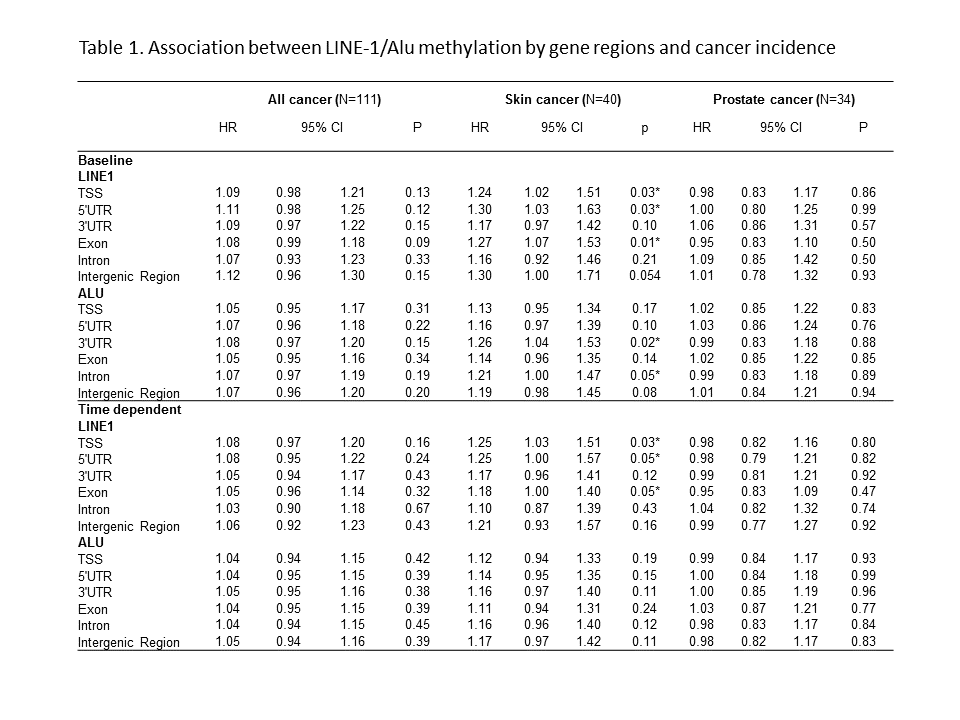Presenting Author:
Tao Gao, M.D.
Principal Investigator:
Department:
Preventive Medicine
Keywords:
repetitive elements, LINE-1, Alu, gene region, cancer incidence
Location:
Third Floor, Feinberg Pavilion, Northwestern Memorial Hospital
PH45 - Public Health & Social Sciences
Methylation of Repetitive Elements by Gene Regions and Cancer Incidence
Background: LINE-1 and Alu are the most plentiful families of repetitive elements and collectively represent 30% of the human genome. Methylation of repetitive elements including LINE-1/Alu may affect gene function and previous studies of LINE-1/Alu methylation in blood and cancer risk had inconsistent results largely due to the approach used by averaging all LINE-1/Alu as surrogate. The distribution of LINE-1/Alu methylation by gene regions may also affect their function and thus their associations with cancer risk. Methods: 485 Normative Aging Study participants with blood drawn 1-3 times from 1999 through 2012 were included in our study. There were 111 incident cancers during median 9.9-year follow-up. LINE-1/Alu methylation were measured by the Illumina Infinium HumanMethylation450 assay and divided into six sub-groups according to their distribution in gene regions (TSS, 5’UTR, 3’UTR, Exon, Intron, and Intergenic region). Cox proportional hazards models were used to evaluate baseline as well as time-dependent methylation as a biomarker for cancer risk. Results: As shown in Table 1, LINE-1 methylation in the TSS, 5’UTR and Exon regions at baseline was positively associated with skin cancer risk (TSS: HR: 1.24, 95% CI: 1.02-1.51; 5’UTR: HR: 1.30, 95% CI: 1.03-1.63; Exon: HR: 1.27, 95% CI: 1.07-1.53). Alu methylation at baseline in the 3’UTR and Intron regions was also positively associated with skin cancer risk (3’UTR: HR: 1.26, 95% CI: 1.04-1.53; Intron: HR: 1.21, 95% CI: 1.0-1.47). We found similar results using time-dependent models. Conclusion: This is the first study to show LINE-1 and Alu methylation in specific gene regions are positively associated with skin cancer risk, thus may act as a significant predictor of cancer incidence. These two measures should be validated in larger prospective studies with more diversified populations for potential use in cancer early detection.

